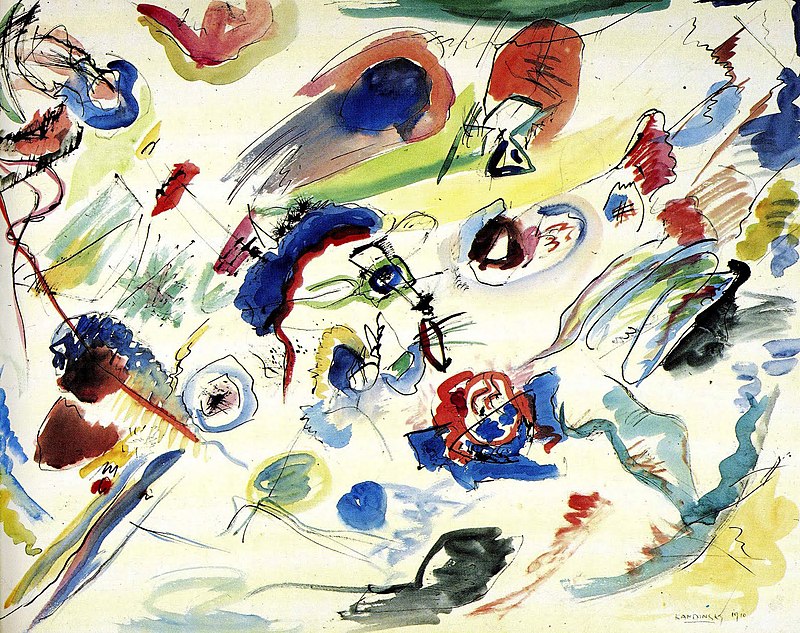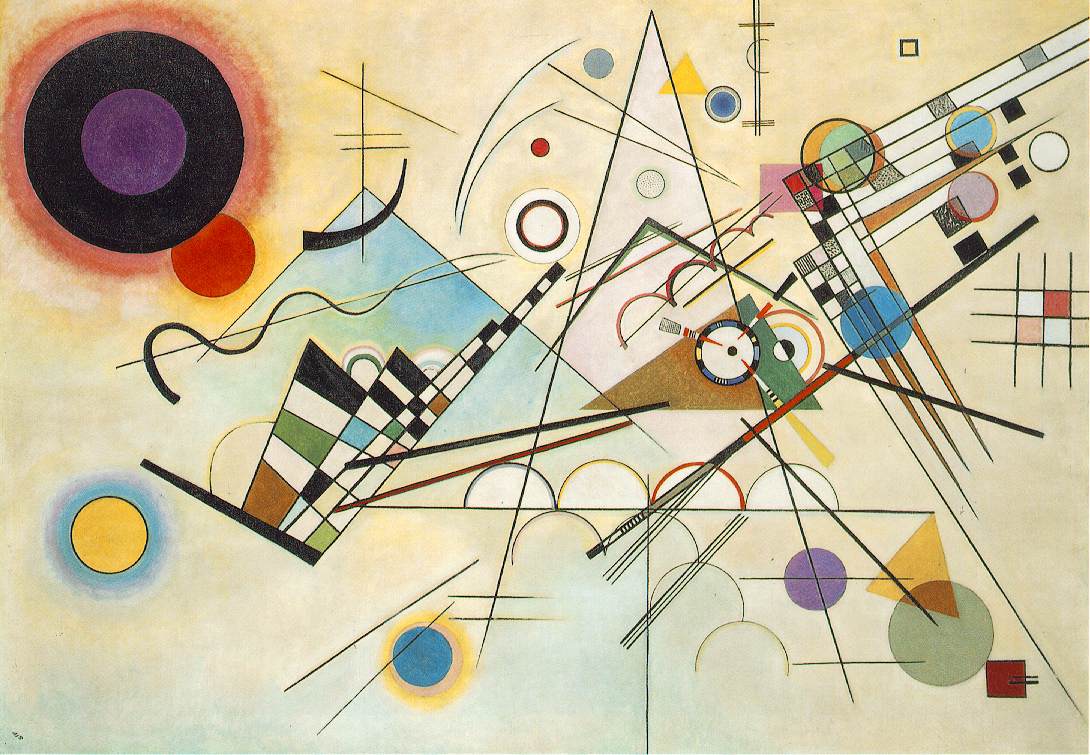Vasilij Kandinskij


Music and its idea appear everywhere in Kandinskij’s paintings so much that his generic titles are
“Compositions”, “Improvisations”, “Impression” etc. He could therefore "see music" as he
followed a performance of Wagner's Lohengrin: he was
capable of synesthesia, that is an involuntary neurological phenomenon by which a person perceives several
senses as being associated.
In particular, listening to Wagner's Lohengrin he could see the colors of his beloved city Mosca.
He is convinced that music can teach to the artist how to represent his psychological life: music
doesn’t want to imitate nature, like art did, but it’s an art form that has its goal in the expression of an
inner
world.
Kandinskij claims that art has to be increasingly similar to music, the colors must assimilate
in sound because that is the only way to abandon mimesis : only an abstract painting can lead to
spirituality. Beauty is reached without any connection to the existent objects, only with colors and shapes.
That’s why Kandinskij is considered the father of Abstract art characterized by Anti Naturalism.

